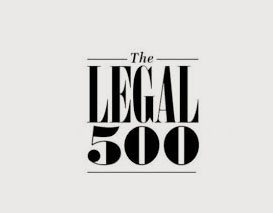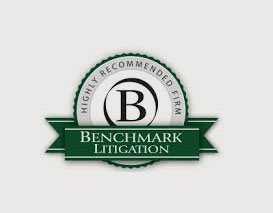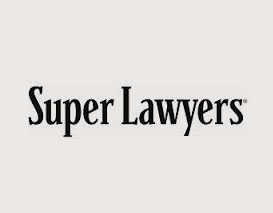Enforcement News: SEC Files Charges Against Georgia-Based Lender For Operating $140 Million Ponzi Scheme
Print Article- Posted on: Jul 14 2025
By: Jeffrey M. Haber
A Ponzi scheme is an investment scam that induces people to invest money in a business or investment vehicle with promises of high returns and minimal risk. Rather than earning profits through actual investments or legitimate business operations, the scheme functions by paying early investors with money contributed by new or repeat participants. The name of the fraud comes from Charles Ponzi, who infamously ran such a scheme in the early 1900s.[1] A Ponzi scheme depends on a steady flow of new money; once the stream of money slows down or stops, the fraud collapses.[2]
At the heart of a Ponzi scheme is fraud and deceit. The promoter of the scheme claims to have access to exclusive investment opportunities or proprietary financial strategies, often shrouded in vague or complex explanations. These assertions are unsupported by verifiable evidence but presented with assurances to inspire trust and induce investment. To maintain the illusion of legitimacy, early investors receive returns—sometimes referred to as “phantom profits” or “fictitious profits”—which are, in fact, funds provided by new or repeat investors. The “success” of the scheme, therefore, depends upon the influx money from new investors and the reinvestment of money by existing investors.[3]
The success of a Ponzi scheme depends on victim referrals and the “credibility” of the promoter.[4] Promoters often use fake account statements, falsified performance data, and positive (but staged or scripted) testimonials to build trust. Little to no actual income is generated by the promoter. Thus, when the pool of new investors dries up or too many people request withdrawals at once, the fraud becomes unsustainable and eventually falls apart—leaving most investors, particularly later investors, with significant losses.
The consequences of Ponzi schemes can be devastating.[5] Victims often lose their homes or businesses, life savings, retirement funds, or borrowed money.[6] The psychological toll can be severe, as victims may feel betrayed, ashamed, or financially ruined,[7] especially when the Ponzi scheme is based on an affinity fraud.[8]
Affinity fraud is a type of fraud that exploits the personal and social bonds within a specific group or community.[9] In cases involving affinity fraud, the fraudster targets groups based on shared identity—such as family, religious affiliations, cultural backgrounds, professions, or social circles—and uses that shared identity to build trust.[10] The fraudster may be a respected member of the group or pose as one, which lowers suspicion and increases the likelihood of participation by leaders and members of the community or group.[11]
When affinity fraud and Ponzi schemes intersect, the result can be devastating. People typically trust investment opportunities that come from within their familial, social, or religious network, and once a few members of the community begin receiving profits and returns (funded by new or existing investors), word-of-mouth spreads the scheme further. Unwitting participants often become the scheme’s best accelerant, drawing in other members of the community who assume that if the investment is profitable for a friend or fellow community member, then it must be one worth investing in.[12]
Even when doubts arise, victims of affinity-based Ponzi schemes are often hesitant or reluctant to report the fraud.[13] Concerns about embarrassing the group, damaging relationships, or implicating a community leader can delay exposure, giving the fraud more time to spread—and cause more financial harm.
Today, we examine SEC v. Edwin Brant Frost IV, et al., Case 1:25-cv-03826-MLB (N.D. Ga.) (here), an enforcement action involving an alleged Ponzi scheme, originally based on affinity fraud, that was perpetrated by defendants Edwin Brant Frost IV (“Frost”) and First Liberty Building & Loan, LLC (“First Liberty”).
According to the SEC, between 2014 and June 2025, defendants raised at least $140 million from approximately 300 investors through the sale of loan participation agreements and promissory notes which offered annual returns of 8% to 18%.
The SEC alleged that defendants represented to investors that their funds would be used to make short-term small business loans at relatively high interest rates (“Bridge Loans”). Defendants allegedly represented that these Bridge Loans and interest thereon would be repaid by borrowers via loans issued by the Small Business Administration (“SBA”) or other commercial loans, which defendants claimed they would help broker.
Initially, said the SEC, defendants solicited and sold these investments to friends and family in the form of either loan participation agreements or promissory notes. These agreements and notes offered investors the opportunity to make an investment that would be pooled with other investor funds and then lent to specific borrowers.
The SEC alleged that beginning in 2024, defendants started a more widespread public solicitation of potential investors, advertising the opportunity to invest in promissory notes through radio advertising, internet podcasts, and the First Liberty website. All the investments, whether offered as a loan participation agreement or a promissory note, alleged the SEC, were purportedly to fund Bridge Loans.
The SEC alleged that defendants did not, however, use investor funds as represented.
According to the SEC, while some investor funds were used to make Bridge Loans, those loans did not perform as represented. Of the Bridge Loans defendants actually made, only a few had been paid in full, claimed the SEC. Most Bridge Loans ultimately defaulted and ceased making interest payments, said the SEC.
Notwithstanding, defendants allegedly continued to make interest payments to investors on the defaulted loans. Since at least 2021, defendants allegedly had to use funds raised from new investors to make those interest payments. Most, if not all, of the funds raised through the publicly advertised offering, alleged the SEC, were either misappropriated or used to make Ponzi-style payments to existing investors. For example, said the SEC, defendant used investor funds to make payments to himself and members of his family[14] and used investor funds to pay for the operations of affiliated companies that he controlled. As recently as May 24, 2025, alleged the SEC, defendant withdrew $100,000 of investor funds for his personal use.
In addition to not using investor funds as represented, i.e., to make Bridge Loans, the SEC alleged that defendants made other misrepresentations when soliciting new investments. Specifically, said the SEC, defendant knowingly misrepresented the success of the Bridge Loan program to investors. According to the SEC, defendant told some potential investors that First Liberty had only one Bridge Loan default. Defendant also allegedly told other potential investors that very few loans had defaulted. In reality, said the SEC, a significant portion of the Bridge Loans issued by First Liberty were in default when defendant allegedly made those statements.
Commenting on the complaint, Justin C. Jeffries, Associate Director of Enforcement for the SEC’s Atlanta Regional Office, stated: “The promise of a high rate of return on an investment is a red flag that should make all potential investors think twice or maybe even three times before investing their money. Unfortunately, we’ve seen this movie before – bad actors luring investors with promises of seemingly over-generous returns – and it does not end well.”[15]
The SEC filed its complaint (here) in the U.S. District Court for the Northern District of Georgia. The SEC charged defendants with violating the antifraud provisions of the federal securities laws and named five entities that defendant controlled as relief defendants. The SEC seeks emergency relief, including an order freezing assets, appointing a receiver over the entities, and granting an accounting and expedited discovery. The SEC also seeks permanent injunctions and civil penalties against the defendants, a conduct-based injunction against defendant, and disgorgement of ill-gotten gains with prejudgment interest against defendants and relief defendants.
Without admitting or denying the allegations in the complaint, defendants and relief defendants consented to the SEC’s requested emergency and permanent relief, with monetary remedies to be determined by the court at a later date.
___________________________________
Jeffrey M. Haber is a partner and co-founder of Freiberger Haber LLP. This article is for informational purposes and is not intended to be and should not be taken as legal advice.
[1] Ponzi promised clients a 50% profit within 45 days or 100% profit within 90 days, by buying discounted postal reply coupons in other countries and redeeming them at face value in the U.S. as a form of arbitrage. Wikipedia, Charles Ponzi (here); see also SEC, Investor.gov, Ponzi Schemes (here). In reality, Ponzi was paying earlier investors using the investment funds of later investors. Wikipedia, Charles Ponzi. Although Ponzi did not invent this type of investment fraud, it became so identified with him that it is now referred to as a “Ponzi scheme”. Id. Ponzi’s fraud ran for over a year before it collapsed, costing investors $20 million. Id.
[2] See SEC Spotlight, “SEC Enforcement Actions Against Ponzi Schemes” (here).
[3] See SEC General Resources on Ponzi schemes (here).
[4] Chen, James, Investopedia, Ponzi Scheme: Definition, Examples, and Origins (Updated Jan. 26, 2025) (here).
[5] Bar Lev, Eldad, Main Implications and Reactions For The Ponzi Schemes’ Victims (“Main Implications”), 99 Journal of Public Administration, Finance and Law (Issue 24/2022), at 100 (here).
[6] Id. at 100-101.
[7] Main Implications, at 101.
[8] This Blog has examined Ponzi schemes and affinity fraud on numerous occasions. To find the articles related to Ponzi schemes and affinity fraud, visit the “Blog” tile on our website and enter “Ponzi scheme” and “Affinity Fraud” in the “search” box.
[9] SEC, Investor.gov, Affinity Fraud (here); see also Rasure, Erika, Investopedia, Affinity Fraud: What It is, How It Works, Example (“Affinity Fraud”) (Nov. 26, 2021) (here).
[10] Affinity Fraud.
[11] Id. see also Investor.gov, Affinity Fraud.
[12] Id. see also Investor.gov, Affinity Fraud.
[13] Main Implications, at 101.
[14] According to the SEC, defendant used investor funds to make over $2.4 million in credit card payments, pay more than $335,000 to a rare coin dealer, and pay $230,000 on family vacations.
[15] Readers can obtain more information about the action through the news media, e.g., here.
Tagged with: Fraud, Ponzi Scheme, Regulatory Defense and Investigations, Securities, Securities and Exchange Commission





